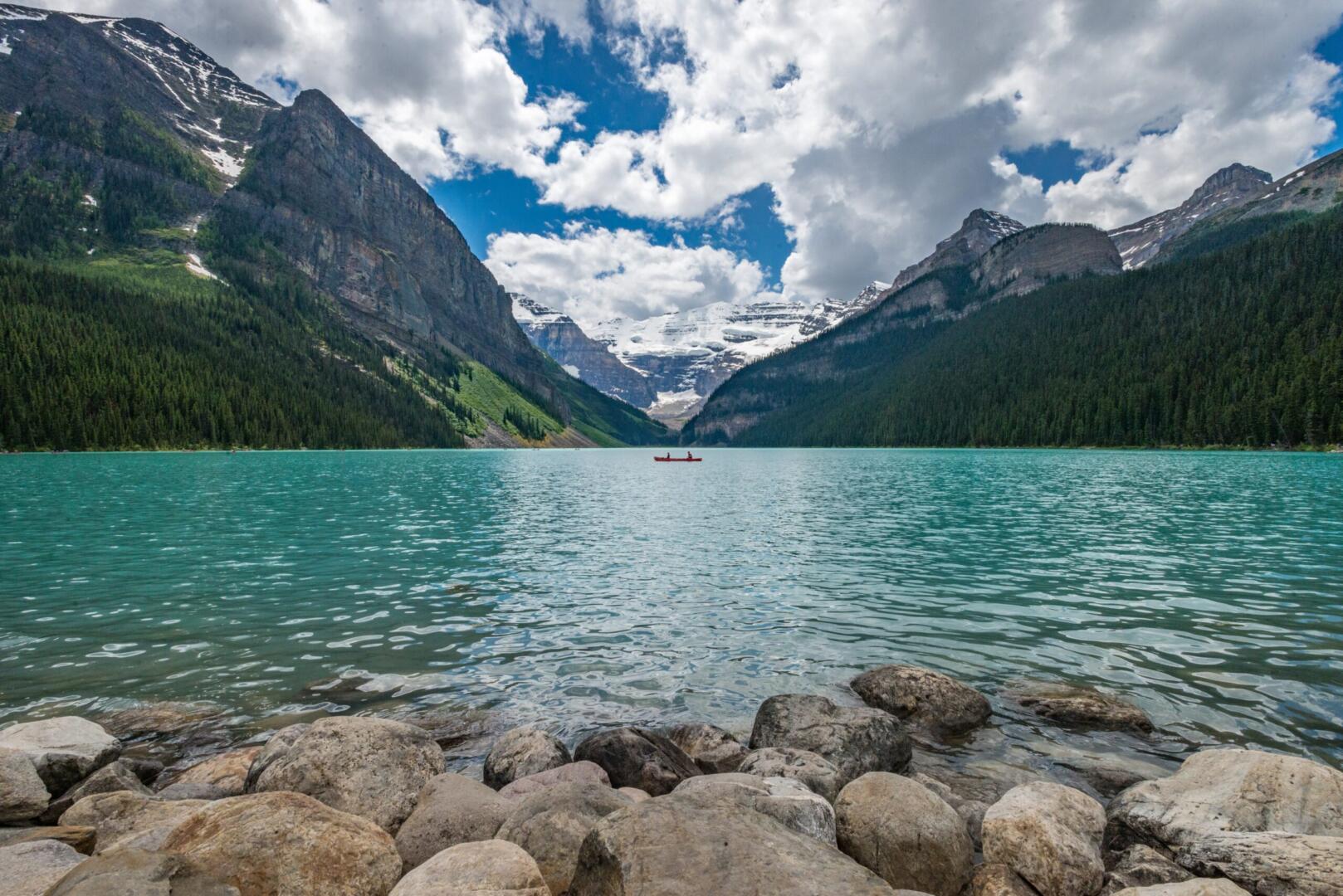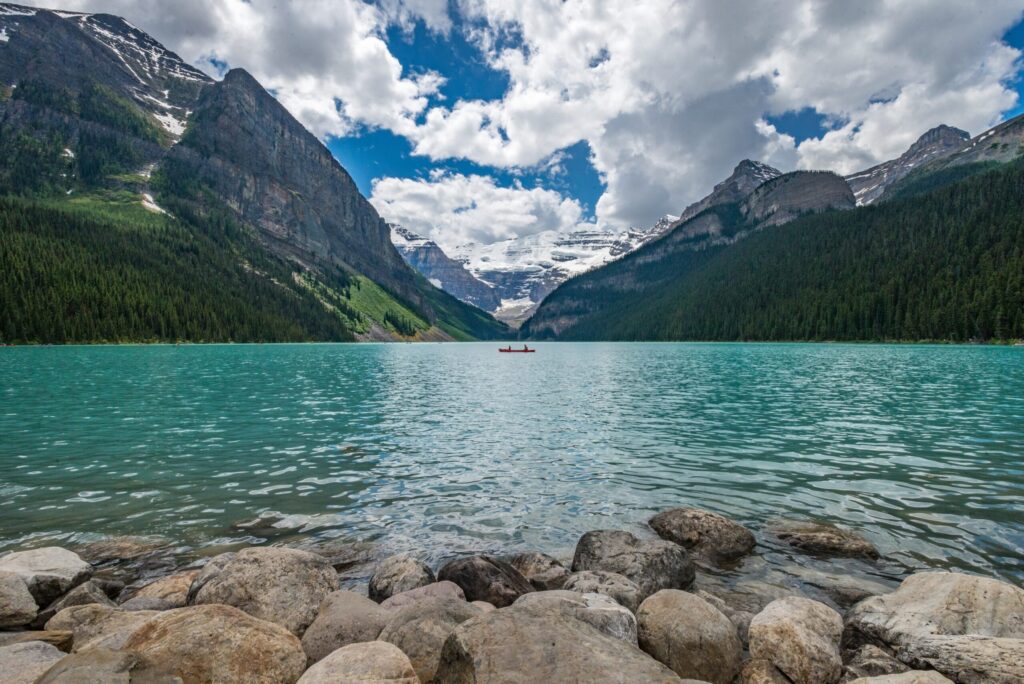Lake Louise is said to be one of the most photographed places in Canada, even the world – and once you visit, you understand why. The turquoise hued water is due to glacial melt that trickles down to the lake, depositing rock flour. The sun reflects off these particles, refracting the blue and green we see in this beautiful body of water. The surrounding rocky mountains don’t hurt, either!
But with so many tourists visiting this natural wonder every year, many go without knowing the history of the lake and region. Banff is located in Treaty 7, on the traditional territories of the Iyârhe Nakoda Nations, the Blackfoot Confederacy, the Tsuut’ina – part of the Dene people, Ktunaxa, Mountain Cree, Métis and Secwépemc. Lake Louise was originally named Ho-run-num-nay (Lake of the Little Fishes) by the Stoney Nakoda First Nations people. The land that is now known as Banff National Park has an incredibly rich history of being a sacred place where medicines were gathered, bison were hunted, fish were caught, and healing was sought in the natural hot springs for centuries. Cascade Mountain, the mountain located in the Bow River Valley of Banff, was called Minihapa by the Stoney Nakoda – which translates to “mountain where the water falls”, just to name a few!

Conversely, there is also some upsetting history that many visitors may not know. It’s no secret that Canada has a history of forced removal of Indigenous people from their ancestral lands. When Banff National Park was created in 1885, Indigenous Peoples were forbidden to hunt within its borders. The park’s first superintendent declared “it is of great importance that if possible the Indians [sic] should be excluded from the Park.”
But Parks Canada is actively working to foster a culture of Reconciliation with First Nations and their heritage places. Mapping Change: Fostering a Culture of Reconciliation within Parks Canada outlines a path forward with key actions to ensure that Parks Canada’s policies and practices support the important work ahead to further advance reconciliation with Indigenous peoples.
As tourists, we hold a privilege many people across the globe only dream of: seeing new places, meeting new people, learning the histories and cultures of places we previously knew nothing about, all simply for our own enjoyment and personal growth. Lake Louise and its surrounding landscapes are a sight to behold, with mountainous terrain, incredibly scenic valleys, glaciers, forests, rivers, meadows and a bountiful supply of fresh air. If you haven’t visited yet, we definitely recommend you do.
We’ve teamed up with our friends at Rocky Mountaineer Experience to create an unforgettable Western-Canada voyage so you can see all of these iconic spots via railway. This awe-inspiring rail journey takes you to the most sought after places in the Canadian Rockies to experience nature—from mountains to moose, gondolas to glaciers—up close. Experience three train routes that carry you off on a sightseeing sojourn from alpine-inspired Whistler and Banff, to the wildlife-rich stomping grounds of Jasper and back to the Pacific Ocean’s stunning coastal city of Vancouver. Click here to learn more about this tour!

So, as you pass through the Bow River Valley (The name “Bow” referring to the reeds that grew along the banks which were used by the local First Nations people to make bows) remember that the Blackfoot name for the river is Makhabn, meaning “river where bow weeds grow”.


